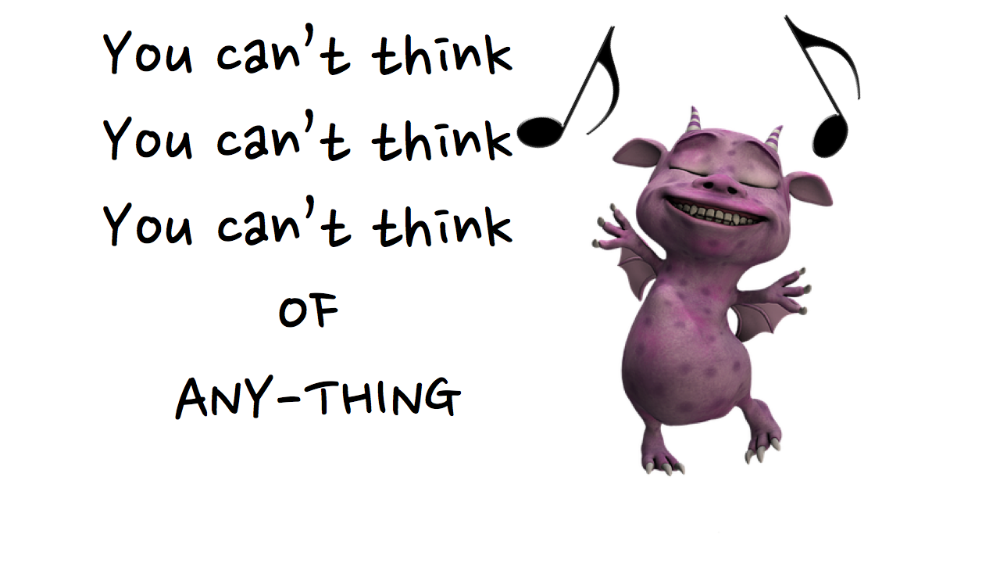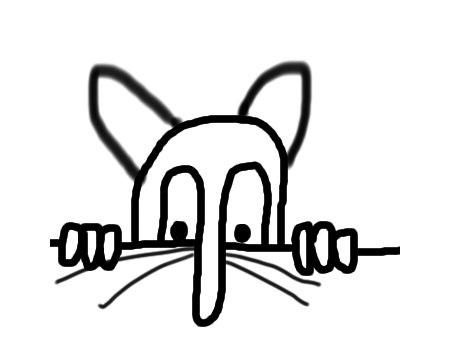
Whether you’re a graphic artist struggling with a new logo, a musician searching for a riff, or a CEO looking for innovation in your business- you routinely face the task of coming up with something new. You must be creative.
If the very idea of being creative finds you paralyzed and unable to think, let alone create, you need a plan that will work consistently. If you’re less artistic and more logical, you may already have a creative block- but before you decide creativity isn’t for you, and pass this article along to your bearded hipsters down the hall, consider this:
Being creative and being innovative are the same thing.
So if you're wearing a tie and shiny shoes, take heart. Don’t let the word “creative” trip you up because it conjures up images of a tortured artist gazing forlornly into the setting sun.
Albert Einstein is widely credited with saying “The definition of insanity is doing the same thing over and over again, but expecting different results”. Being creative simply means: doing something different.

In the early days of my career, I was chained to a desk, charged with writing radio commercials. Each day, I sat frozen and unable to create, while a small elf sat on the shelf next to me swinging his legs, whispering: “Can’t think of anything, can ya?” While the AEs paced the sales office waiting for me to pop out ideas like a toaster, I gnawed my fingernails, hoping Halley’s Comet would hit the Earth- a fate I would have preferred to missing a deadline. Thin and weak from a diet of coffee and Slim Jims, I used what little strength I had left at the end of each day to bang out- something. It wasn’t long before I began searching for a methodology more effective (and less painful) than “deadline panic”. I can’t say exactly what will work for you, but below I give you six hands-on tips to generate creative ideas that work for me. If your deadline is just hours away, you may skip immediately to those tips. If you’ve got until at least tomorrow, you might want to understand the flow of generating ideas, detailed next.
The THREE STEP PROGRAM
There are three steps to coming up with a fully formed idea:
Preparing to capture ideas
Capturing ideas
Fleshing out those idea nuggets into something coherent and useful
Step One: Prepare
I always have at my side the necessary tools to document ideas, because I don’t know when an idea will appear in my mind. My word processor is almost always open on my desktop, laptop or cellphone. I keep pencils and paper everywhere. My cellphone’s “voice record” app is the 1st one on the screen, since often I find it much easier to hit record and just say what I’m thinking. This is especially true while driving :-) Since my day-job involves sound design, I keep my guitars and keyboard at the ready both at home and at the studio. Depending on what you do, your tools will vary. Just make sure they’re always within reach.
Ideas like to show up when you're not looking for them-
they're very sneaky...

One thing that sure helps me mentally prepare (gets me out of my thinking rut), is simply changing my routine- immediately. If I’m at my desk- I get up and go for a walk- even if it's only to the coffee pot. If I’m driving to work- I take a different route. If I pick up my guitar- I tune it to an alternate tuning. Most of us find a change in routine, no matter how brief, is stimulating, and you must be stimulated to get ideas. Many people find that morning is the ideal time to create. Maybe it’s the coffee, but nearly all of my creative “spells” are in the morning after glugging a cup of black medium roast. For others, it may be the drive home, or after dinner. Whichever time of day you feel the most creative is the time you should use to catch ideas.
Remember always, that ideas are wild- they don’t come when you call them. They are shy creatures roaming the brambles of your subconscious. Charge at an idea, aiming to catch it, and it will take flight. And, if you don’t catch ideas when they do come to you, trust me- they will not be coming back. So it’s important to stop whatever you are doing when an idea does appear, grab your tools, and nab that sucker while you can. Ideas like to show up when you're not looking for them- they're very sneaky...
Step Two: Capturing (generating) Raw Ideas
Like fishing, you just can’t think the fish into your net. You’ve got to do something. (This is the fun part!)Write down, in words, a brief description of what you’re aiming for. The very process of describing your aim may yield surprising results as you search for the words. Try it! And don’t be surprised if you struggle just a bit- you're seeing your problem from a new angle. And for goodness sakes do not erase or delete “failed” attempts. Keep everything, because you may just find inspiration in how you “mis-defined” your goal. For example, if you wrote down the words design a chair, you will likely draw something very much like, well, a chair. However, if you wrote the words designan item on which to sit, you are much more likely to create something different than a traditional chair, but with the same, or maybe better functionality. This method leads to the ultimate question: “What am I really trying to do?” Put another way: “What am I doing?” vs “What do I do”?
(Yoda would now say: Ponder that last sentence, you must.)
Think of a single word or phrase that best describe the essence of what you’re trying to create. Now, Google those words- but search Images. Image searches bring up odd and unexpected things, and that’s exactly the randomness you need to get you out of the hellhole that is your creative block. Before writing this article, I searched the phrase “Ideas are hard to catch” in Google Images. The 1st image was of a man trying to catch a greased pig. Another was an adage that read: “A Girl should be like a butterfly. Pretty to see, hard to catch.” This is exactly how I found direction for this blog post to anthropomorphize ideas into creatures to be caught, as an analogy.
Surf the net for random trivia. This works best for copywriters looking for an angle to start. Search til you find funny or unique trivia. I actually have several trivia sites bookmarked. I just found this trivia item: Elephants sleep only 3 - 4 hours a day. Now I can write the opening line for a Sleep and Sofa Store:
“Elephants sleep an average of only 3 hours a night. Maybe they need a new mattress from ------- Sleep Center! (This goes in my “Idea Bank” for future use, because I don’t need this idea now- more on that later)
Write the truest sentence you know (about the client, service or problem). This advice is actually not mine- it comes from a guy named Ernest Hemingway. It was his advice in how to start writing. Hemingway seemed to have done OK in his creative writing endeavors, so give that one a shot. You’ll find there’s magic in getting that opening sentence down. From there, things flow more easily because you have a direction.
Ask someone disinterested what they think. I’ve gotten great creative ideas from people who had no idea what they just said was the thing I was looking for. Everyone can create, but not everyone can recognize they are doing it. Sometimes it’s just a single word or phrase that contains the essence of the idea. Make sure to listen carefully, because the person you ask will probably blurt out the essence of the idea almost immediately. (You can flesh it out later.) Of course, you might get some ridiculous suggestion- but be careful before you label anything "ridiculous"- some amazing ideas sound ridiculous simply because we lack the imagination to envision how to implement them.
If you’re a writer or salesperson looking for an angle, start with some statistics about your client, service or story. If you know anything about your subject, you’ll be able to pull some statistic. An obvious example would be to go for the number of years your client has been in business, and that’s fine- but dig deeper when fleshing it out; eg; “In 1979... we started out with one truck and a dream. Now, our fleet has expanded to over 50… “ Your client/boss will love you for this approach because you can display your knowledge. You can use statistics in a number of ways, even graphically. Don’t be surprised when you look at a set of numbers- and an idea pops into your head!
At some point, you will have a number of “leads”- or the beginnings of ideas. Catch them until they come to you no longer- and don’t worry if none of them are complete. Some will seem nearly complete- other’s not at all. That’s OK. Congratulations, you’ve just completed step two!

Don't Judge
As you’re capturing ideas, don’t dismiss them because you judge them. If you only suspect you might have a nugget of an idea- write it down, draw it or record it immediately. You can sort according to quality later, but you won’t have the idea later. Which brings us to the 3rd step...
Step Three: Sort, Organize and Finish
“An intellectual says a simple thing in a hard way. An artist says a hard thing in a simple way.
- Charles Bukkowski
In writing this post, I started with various thoughts and ideas- none in proper sequence, some even redundant. I then organized those “leads”, (as old school journalists call them), fleshed things out into paragraphs, and finally hacked (edited) things down to be concise and clear. This is the conscious part of creativity, and it is where the work will seem familiar. The previous step of generating ideas shouldn’t be work at all, much like fishing. The “elf” analogy I mentioned earlier? He popped into my head while I was making an egg this morning and vaguely thinking about how much pressure writing creatively can be. I made sure to jot it down immediately before I forgot it. Depending on the scope of your endeavor, this final step may involve a little or lot of work, but there is little doubt you can expect results if you apply any amount of effort at all. For people who believe they are not creative, this last step will likely seem more natural. This is where you just charge ahead like a bull. Like a sculptor, you will chisel away everything that doesn’t look like what you’re aiming for- no creativity necessary at this stage.
Finally, here is the one secret that has saved me from writer’s block more than you can imagine: Create when you feel like it- and save that stuff for when you need it.
Whether you’re a writer, graphic artist, musician - or problem solver- if you create when you feel like it, you will create freely and avoid pain. You can bank it, and then when that deadline looms and the elf is chuckling on your shoulder, dig into your stash of ideas and begin tweaking for the purpose at hand. If you’re a graphic artist, imagine finding a use for that silly elephant in a dress you doodled absent mindedly some time ago. I write ideas for blogging (meaning I start but don’t finish) all the time- some of which I don’t know if I’ll ever use. I learned this writing advertising copy. Many an AE assumed that when I quickly came up with something- it was because I was a genius. Truth is I had a file full of half-baked ideas that I just needed a reason to finish. Again, don’t judge these things when they come to you- document them. Some may seem odd, unfamiliar, or even seem plain silly. I’ve learned to cope with that. One must recognize that the public loves uniqueness more than sameness. People love new stuff. New = unique. The most beloved things are not copies of other things- they are unique and often seem odd- at first. Where doesodd end, and unique begin? I don’t know- I let other people decide that for themselves.

About Ray Norman
For over 3 decades, Ray Norman has produced commercials and sound design for business all across America. He started out in the pressure cooker of local radio, where he was expected to pop out creative ideas like a Sears toaster. There's something to be said for baptism by fire.